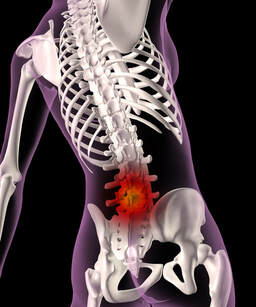
Back pain could strike at any time. It’s an acute pain that takes away your enjoyment in your favorite activities. It can happen while bending, twisting, or simply picking up your kids or grand kids. Chronic lower back pain afflicts far too many people.
Each year, approximately 6 million Americans visit the doctor for back pain and nearly half a million of these sufferers require hospitalization. In addition, industry studies estimate that medical costs for lower back pain are roughly $24 billion, with an additional $30 to $40 billion resulting from indirect costs such as lost work time and worker's compensation.
Of the three areas of the spine the lumbar or lower back assumes most of the weight-bearing activities, and therefore is most susceptible to injury. Fusion surgery, where two or more vertebrae are literally "fused" together in order to eliminate motion in the discs and, therefore, pain, is a surgical option to treat lower back pain. "Fusion surgery has become so prevalent because it treats the condition of discogenic back pain in an obvious way," said Dr. Nagy Mekhail, M.D., PhD., chairman of the Department of Pain Management at the Cleveland Clinic. "However, the healing time, cost and the reduced flexibility associated with fusion surgery makes alternate, less invasive options an important consideration in a patient's continuum of care."
For the nearly 2 million people with chronic lower back pain who have failed to respond to nonoperative treatments such as physical therapy, medication and spinal injections, and who don't yet want to go to the extreme of fusion surgery, a minimally invasive procedure called the Intradiscal Electrothermal Therapy (IDET) procedure may offer an alternative for those suffering from persistent and often unbearable pain. The IDET procedure uses controlled heat to modify tissue in the disc wall and is performed on an outpatient basis, taking approximately 40 minutes from start to finish. Similar to a radial tire that wears down over time, cracks or fissures-due to age or injury-may develop in the wall of the intervertebral disc, causing pain. The IDET procedure works by raising the temperature of the disc wall. The heat contracts and thickens the collagen fibers within the disc wall, potentially closing the cracks and tears, and cauterizing the nerve endings that cause pain. While simply growing older is a risk factor for potential back problems, those with sedentary lifestyles, those using improper or incorrect body mechanics during exercise or sports, and those working in a high-risk occupation that requires heavy lifting are also susceptible for lower back pain. 
For individuals seeking to maintain a healthy back, there are steps you can take to lessen the burden on your discs and vertebrae:
* Use correct posture during sitting, standing, and walking to minimize unwanted stress on the spine. * Incorporate regular stretching, aerobic activities, and strengthening of the abdominal muscles into your lifestyle. * Practice proper body mechanics when bending, lifting, or carrying items. However, for the millions of people who suffer from chronic lower-back pain, the IDET procedure offers a new minimally invasive approach. Disclaimer: The videos, posts, and comments contained in our *Health & Weight Loss Categories* on this website are not medical advice or a treatment plan and are intended for general education and demonstration purposes only. They should not be used to self-diagnose or self-treat any health, medical, or physical condition. Don’t use this website to avoid going to your own healthcare professional or to replace the advice they give you. Consult with your healthcare professional before doing anything contained on this website.
0 Comments
Leave a Reply. |
|